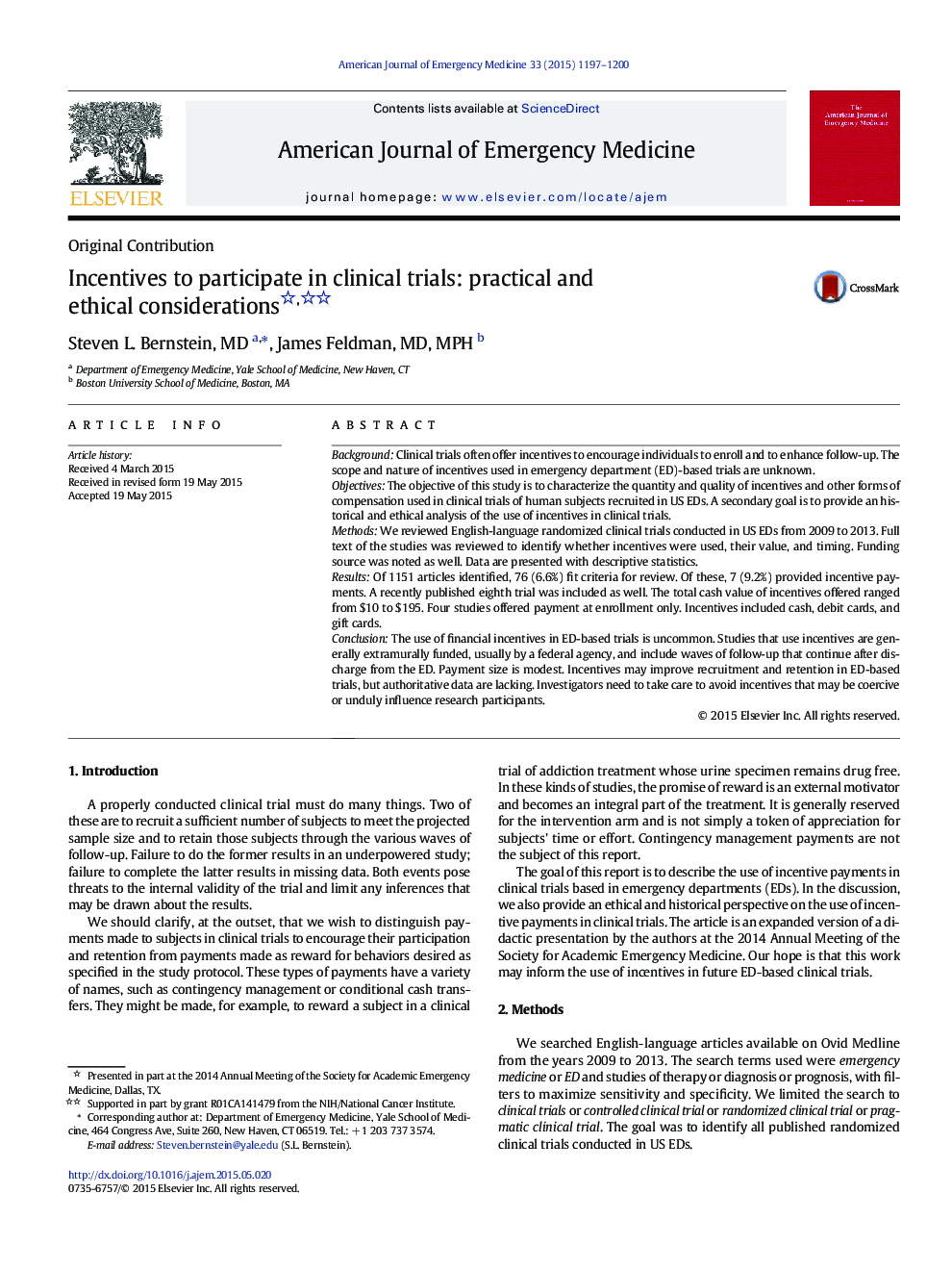| Article ID | Journal | Published Year | Pages | File Type |
|---|---|---|---|---|
| 3223895 | The American Journal of Emergency Medicine | 2015 | 4 Pages |
BackgroundClinical trials often offer incentives to encourage individuals to enroll and to enhance follow-up. The scope and nature of incentives used in emergency department (ED)-based trials are unknown.ObjectivesThe objective of this study is to characterize the quantity and quality of incentives and other forms of compensation used in clinical trials of human subjects recruited in US EDs. A secondary goal is to provide an historical and ethical analysis of the use of incentives in clinical trials.MethodsWe reviewed English-language randomized clinical trials conducted in US EDs from 2009 to 2013. Full text of the studies was reviewed to identify whether incentives were used, their value, and timing. Funding source was noted as well. Data are presented with descriptive statistics.ResultsOf 1151 articles identified, 76 (6.6%) fit criteria for review. Of these, 7 (9.2%) provided incentive payments. A recently published eighth trial was included as well. The total cash value of incentives offered ranged from $10 to $195. Four studies offered payment at enrollment only. Incentives included cash, debit cards, and gift cards.ConclusionThe use of financial incentives in ED-based trials is uncommon. Studies that use incentives are generally extramurally funded, usually by a federal agency, and include waves of follow-up that continue after discharge from the ED. Payment size is modest. Incentives may improve recruitment and retention in ED-based trials, but authoritative data are lacking. Investigators need to take care to avoid incentives that may be coercive or unduly influence research participants.
